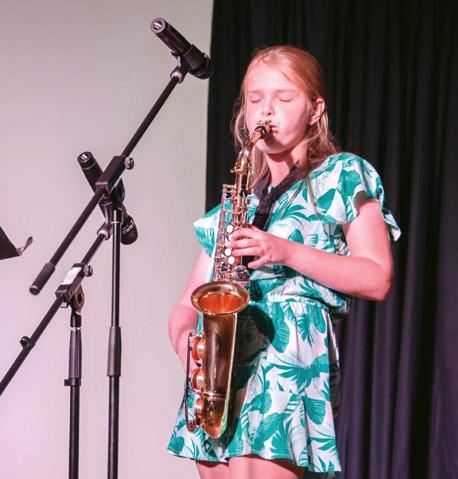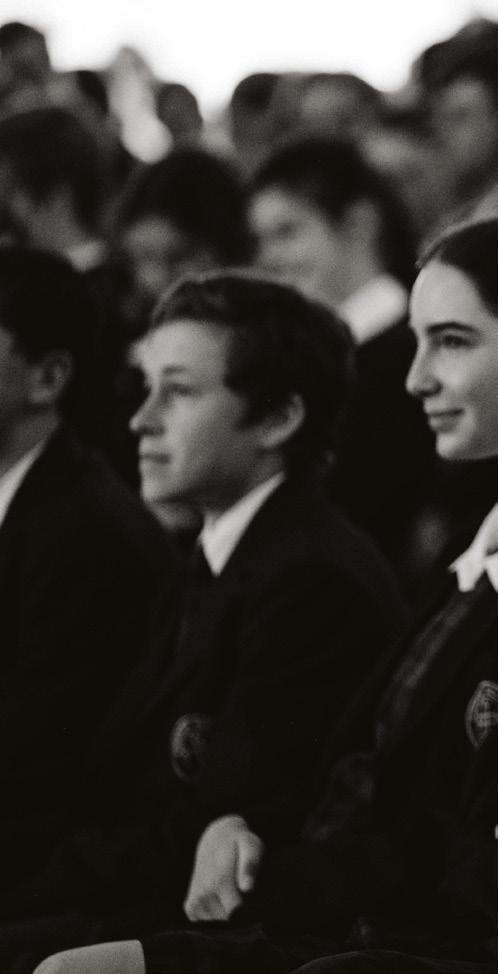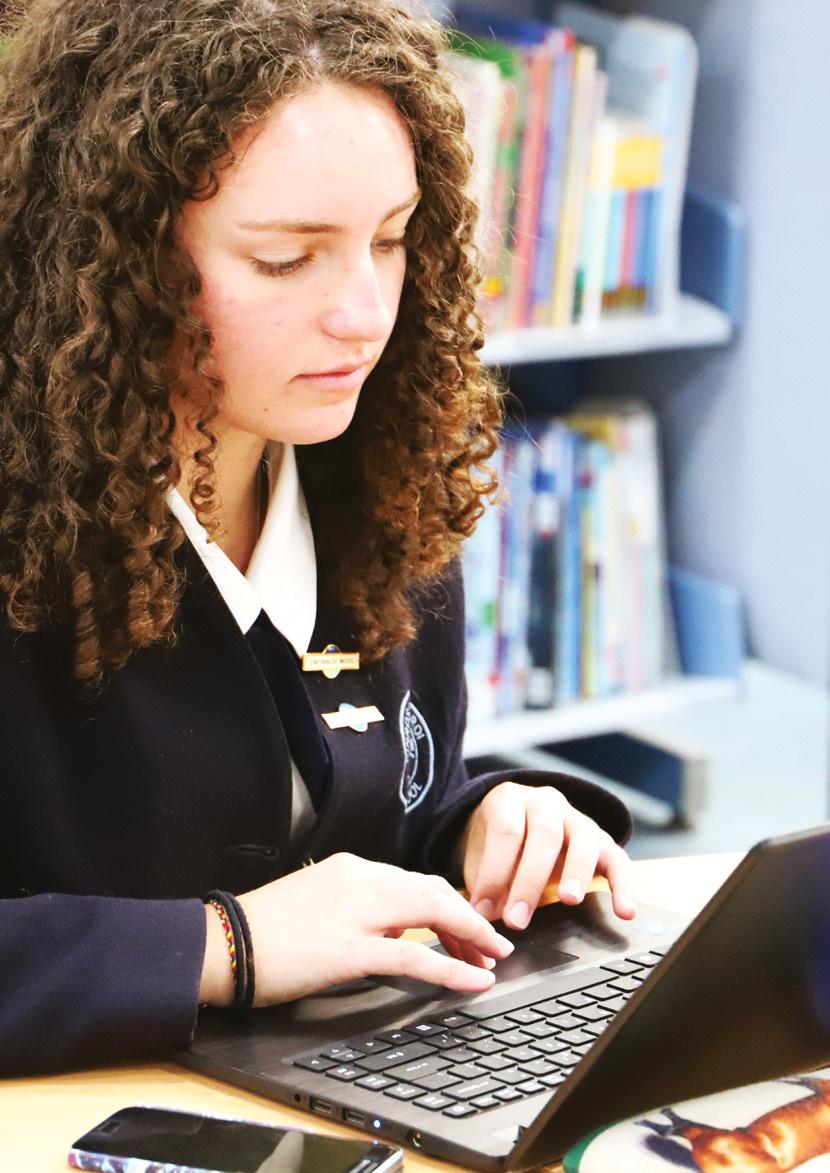
4 minute read
From the Principal
Some of you may not be aware that I began my career as an educator teaching Visual Arts. As a result, The Arts have always been a strong passion of mine and I am keenly aware of the great importance they play in educating the whole child so that they can lead a rich and fulfilling life.
In this edition of ‘The Chronicle’ our focus is on creative arts at our School, where they are a vital part of the structure of the education we provide for our students. What are the intrinsic benefits of the Creative Arts in a child’s education and why are they a necessity? The Arts play a central role in human identity and culture; they have existed as long as civilisation itself. The Arts feed our identity as individuals and as communities. George Bernard Shaw acknowledged their importance when he wrote, ‘the Arts are the window to the soul’.1 They help us to express who we are, where we are from and what is important to us.
Experiencing the Arts is natural and necessary for all children and young people as part of their learning; through the Arts they gain access to both the real world and to imaginative worlds, helping them to form coherent meaning and order for themselves out of the welter of impressions and sensations that bombard them.
An ever-growing body of evidence indicates that engaging in daily creative activity and artistic pursuits can lead to a more positive state of mind, can improve wellbeing, benefits selfregulated emotional functioning and strengthens community.
The Arts are a valuable instructional medium that can support our teaching by transforming the experience of learning. The creative process can cater for every learning preference; it can be aesthetic and sensory, cognitive, physical and social. In this way it helps to ensure that the curriculum engages and has relevance for every child. Not only that, the principles of creativity — exploration, experimentation, perseverance, striving for excellence — are the same as those that guide and shape high standards in contemporary education.1
An Arts-rich education also helps young people make sense of the world and enhances their awareness of diverse cultures and traditions and the wider global context in which they live. They illuminate the advantage of viewing the world from other perspectives and help with building mutual respect and understanding.
Research has shown that the role of joy and total absorption that consumes individuals engaged in the creative process has been underestimated. An immersion in the Arts can improve an individual’s sense of enjoyment, purpose and selfunderstanding. A growing body of research has demonstrated that an arts-rich education can increase confidence and motivation, contributing to the wellbeing and life skills of young people.
Not only that, recent research from New Zealand’s University of Otago showed that daily creative activity induces, “…a particular kind of upward spiral for wellbeing and creativity – engaging in creative behaviour leads to increases in wellbeing the next day,” significantly predicting feelings such as pleasurable engagement, happiness, joy, excitement and enthusiasm. And this increased wellbeing is likely to facilitate further creative activity.”2 They concluded that these findings support the emerging emphasis on everyday creativity as a means of cultivating positive psychological functioning.
The 21st century dawned as the beginning of the Digital Age – a time of unprecedented growth in technology and its subsequent information explosion. Numerous studies and reports have emerged over the past decade that seek to identify the life, career and learning skills that will lead to success in the next century. Creativity, curiosity, imagination have been identified as abilities that our students will always need. Creative individuals are constantly curious, highly motivated, are willing to take risks; they possess the ability to think outside the square, to combine unusual ideas with more conventional ways of thinking and to see these ideas come to fruition.3
Leading Psychologist and researcher, Mihaly Csikszentmihalyi, is known for his ground-breaking work on creativity and positive psychology. He has commented, “You would think that given its importance, creativity would have a high priority among our concerns. And in fact there is a lot of lip service paid to it. But if we look at the reality, we see a different picture. Basic scientific research is minimized in favour of immediate practical applications. The arts are increasingly seen as dispensable luxuries that must prove their worth in the impersonal mass market.”4
We have seen the Arts treated poorly over the past year, deprived of the support of Jobkeeper while the industry in almost all its forms was shutdown. The pandemic has presented an existential threat to theatre, film, music performance and galleries. We have quickly discovered that the virtual world is a poor replacement for the kind of intensely personal interaction through which the Arts thrive. As a School we have had to work incredibly hard to continue to provide an environment that fosters and shares our students’ artistic endeavours during this period.
Professor John O’Toole, lead writer for the National Curriculum for the Arts, says that they help us to see the world through different eyes; “we can create new worlds, experiment with the possible, invent and hypothesize, and reflect in new ways on what we think we know. The 21st century is a place where both change and innovation are constants and we need creativity more than ever before – in our personal and social lives and in the world of work. In almost all careers and industries, employers want creative individuals.”
For all of these reasons and more, our creative arts – music, drama, visual arts, media arts, dance, creative writing and more – are an integral part of the way we teach at Kinross Wolaroi School. Why? Because the development of the whole child is the whole point •
Dr Andrew Parry Principal – KWS










